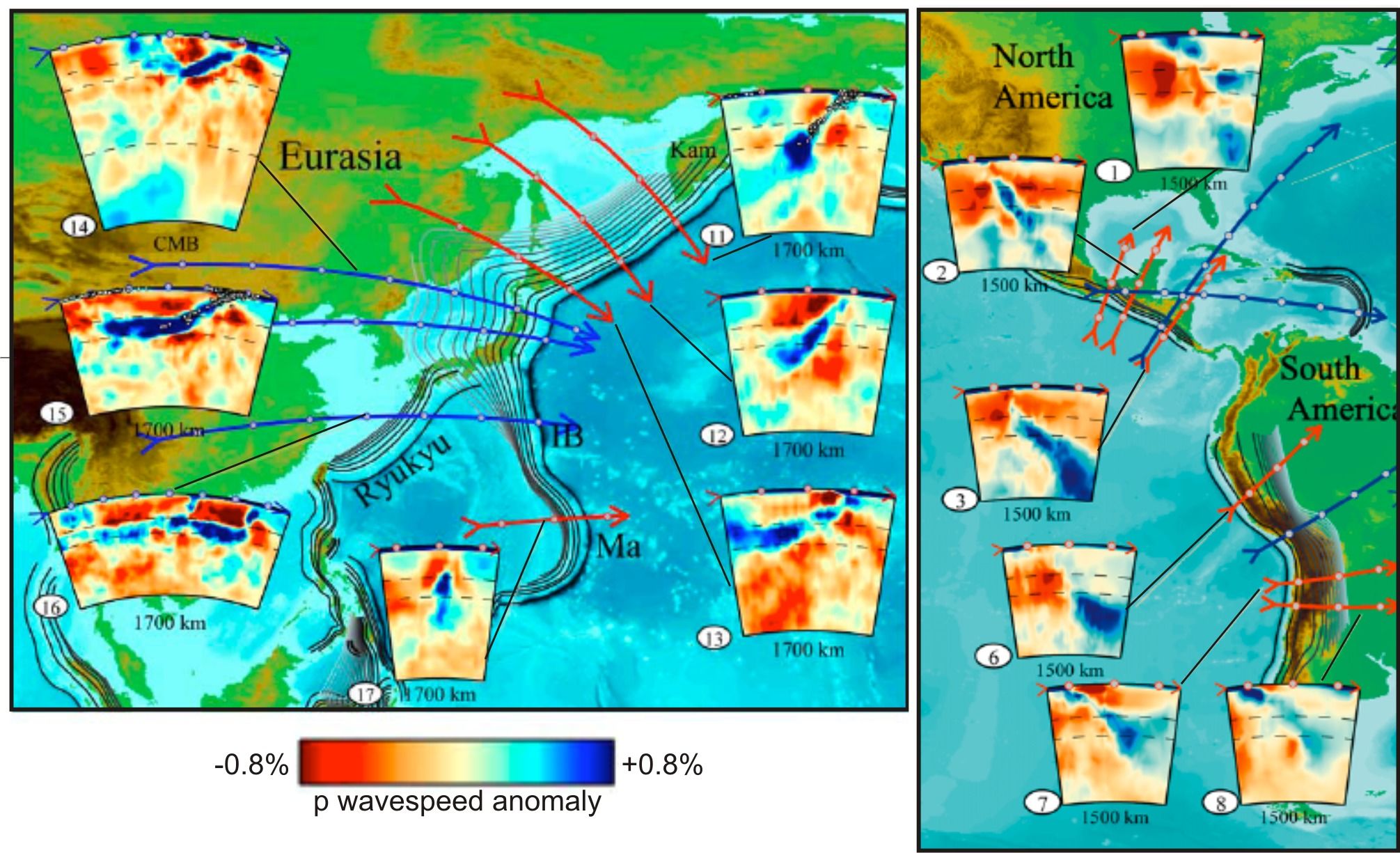Quantifying The Key Controls On Regional Subduction Dynamics
Mantle convection is the `engine' that drives our dynamic Earth. It is the principal control on Earth's thermal, chemical and tectonic evolution. The mantle transition zone plays a critical role in this fundamental process, by controlling the passage of material between Earth's upper and lower mantle.
Project status
Content navigation
About
Motivation & Scope
Mantle convection is the `engine' that drives our dynamic Earth. It is the principal control on Earth's thermal, chemical and tectonic evolution. The mantle transition zone plays a critical role in this fundamental process, by controlling the passage of material between Earth's upper and lower mantle. However, despite its significance, this complex `gateway' is poorly understood. Seismic images of Earth's interior reveal that when subducting slabs reach transition zone depths, some stall, whilst others pass through unhindered. The cause of such variations remains unclear, due to complexities arising from non-linear and multi-scale interactions between several aspects of the mantle system, including global mantle flow, mineral phase changes and material rheology.
In this project cutting-edge, multi-scale 3-D geodynamic models will be used to determine the principal controls on: (i) slab deformation within the mantle transition zone; and (ii) the propensity for slabs to penetrate into Earth's lower mantle, yielding a detailed quantitative understanding of the gateway between Earth's upper and lower mantle. We will tackle this in the context of regional and global models of the mantle/lithosphere system, focusing upon the role of: (i) downgoing plate properties (for example, plate-age and width); (ii) adjacent overriding and lateral plates; and (iii) global mantle flow. Models will incorporate the latest experimental and theoretical constraints on density, phase proportions and rheology, whilst also including prime constraints from the most recent global plate- motion reconstructions (e.g. Seton et al. 2012). In addition, they will exploit novel and unique adaptive grid methodologies to provide the resolution necessary to capture rapid changes in material properties in, and around, the transition zone.
Understanding convection within Earth's mantle has been designated one of ten `grand research questions in the Earth sciences', by a US National Academies report. The gateway between Earth's upper and lower mantle, the mantle transition zone, arguably exerts the dominant control on this fundamental process and its kinematic expression at Earth's surface.

Figure 1: Cross-sections through a P-wave seismic tomography model (Li et al. 2008). Gray-scale contours display subducting plate morphology, defined by slab related seismicity. Blue colors represent faster than average seismic velocities, which are related to colder than average subducting slabs. Note that whilst slabs are frequently prevented from penetrating into the lower mantle in the Western Pacific, in the Eastern Pacific and some Western Pacific subduction zones, they enter without significant deformation.

Figure 2: A 2-D thermo-mechanical dynamic subduction simulation from Fluidity. Temporal snapshots of: (a) temperature; (b) viscosity; (c) the dominant deformation mechanism; and (d) the underlying computational mesh, from a case where subducting/overriding plates are initially 100/20 Myr old at the trench, respectively (black squares indicate initial trench location). White lines in panel (a) mark isotherms from 600-1400 K at 200 K intervals. Black (b/c) and red (d) lines mark the location of the 1300K isotherm. In this class of subduction model, the slab's buoyancy and distinct rheological properties arise self-consistently, through variations in temperature, pressure and strain-rate, with deformation accommodated through a composite diffusion creep (diff), dislocation creep (disl), Peierls creep (P) and yielding (YS) law. In the example shown, the slab's excess density drives subduction and trench retreat over time. Upon interaction with the transition zone, the descending slab temporarily stalls and deforms (b/c), before slowly sinking into the lower mantle (d). Note that throughout its descent, the slab maintains a strong core (b), which is a requirement from observations of Benioff seismicity. The underlying computational mesh is adapted at fixed intervals during the simulation, with zones of high resolution analogous to regions of dynamic significance. A local resolution of ~500m is required to resolve the slab's strong core and the interface between subducting and overriding plates (modified from Garel et al. 2014).
Objectives
We will follow a systematic sequence of objectives to determine the principal controls upon transition zone slab deformation and the transfer of subducted material into Earth's lower mantle:
- Quantify the relative importance of downgoing plate-age and slab-width for trench migration rates, transition zone slab deformation and lower mantle slab penetration.
- Quantify how: (i) an overriding plate; (ii) the nature of the plate contact; and (iii) lateral (side) plates, influence slab deformation.
- Quantify the influence of regional downgoing and overriding plate properties on subduction dynamics:
- Quantify the significance of global mantle flow and subduction zone interaction:
A systematic approach, like that proposed, will allow us to isolate how these components control and contribute to slab deformation within the mantle transition zone and lower-mantle slab penetration. The approach proposed also allows the broadest range of constraints to be brought to bear, quantitatively: the basic conservation laws of physics, observational data from geophysics and experimental and theoretical constraints on mantle rheology and mineralogy.
